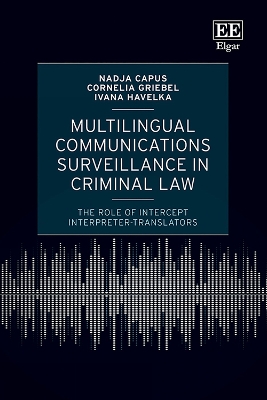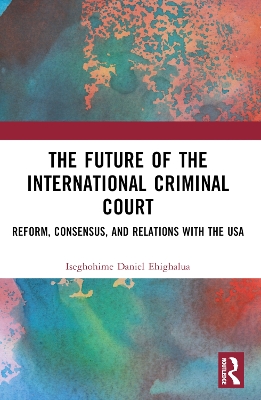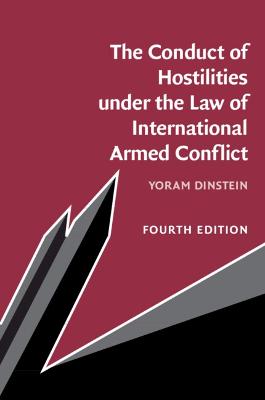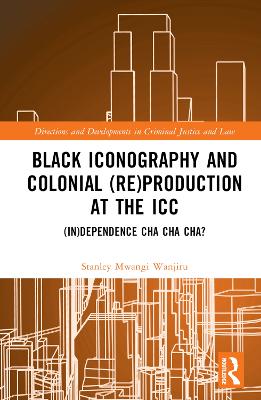Atrocity Crimes and International Law
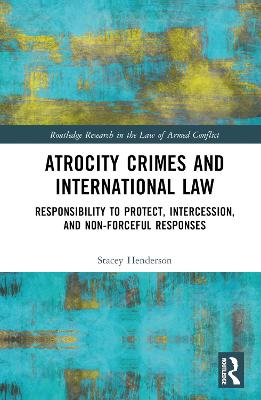 portes grátis
portes grátis
Atrocity Crimes and International Law
Responsibility to Protect, Intercession, and Non-Forceful Responses
Henderson, Stacey
Taylor & Francis Ltd
10/2022
172
Dura
Inglês
9781032116457
15 a 20 dias
Descrição não disponível.
Acknowledgements
1 A shield for delinquent States
1.1 Shielding delinquent States: sovereignty and the principle of non-intervention at their highest
1.2 Piercing the shield of sovereignty
1.3 Implementing and operationalising R2P
1.4 Maximising permissible responses to atrocity crimes
2 Intercession as a conceptual tool to examine State practice
2.1 Not a binary choice between doing nothing and using armed force
2.2 Intercession
2.3 Implementing R2P by using measures less than force
2.4 The power of ideas to shape State practice
2.5 Charting a way forward for significantly enhanced international responses to the commission of atrocity crimes
3 The use of diplomatic measures to respond to atrocity crimes
3.1 The use of diplomatic measures to respond to atrocity crimes
3.2 Softening the hard edges of R2P
4 Economic sanctions: the practice of the United Nations, regional organisations, and States
4.1 A working definition of economic sanctions
4.2 Legal justification for the imposition of sanctions
4.3 Contemporary sanctions practice
4.4 The significance of contemporary sanctions practice
4.5 An evolving sanctions practice
5 Restriction of means to commit atrocities
5.1 Campaigning for regulation of the international conventional arms trade
5.2 Progress towards the Arms Trade Treaty at the United Nations
5.3 The relevance of R2P for the Arms Trade Treaty
5.4 The treaty text
5.5 State responsibility and the Arms Trade Treaty
5.6 The restraining influence of intercession under R2P
6 Provision of assistance to opposition groups
6.1 The traditional approach
6.2 Evidence of an emerging and different State practice
6.3 A more drastic form of intercession
7 R2P: more than empty rhetoric
7.1 The evolution of foundational principles of international law
7.2 Measures less than the use of force
7.3 R2P in practice
7.4 More than empty words
Index
1 A shield for delinquent States
1.1 Shielding delinquent States: sovereignty and the principle of non-intervention at their highest
1.2 Piercing the shield of sovereignty
1.3 Implementing and operationalising R2P
1.4 Maximising permissible responses to atrocity crimes
2 Intercession as a conceptual tool to examine State practice
2.1 Not a binary choice between doing nothing and using armed force
2.2 Intercession
2.3 Implementing R2P by using measures less than force
2.4 The power of ideas to shape State practice
2.5 Charting a way forward for significantly enhanced international responses to the commission of atrocity crimes
3 The use of diplomatic measures to respond to atrocity crimes
3.1 The use of diplomatic measures to respond to atrocity crimes
3.2 Softening the hard edges of R2P
4 Economic sanctions: the practice of the United Nations, regional organisations, and States
4.1 A working definition of economic sanctions
4.2 Legal justification for the imposition of sanctions
4.3 Contemporary sanctions practice
4.4 The significance of contemporary sanctions practice
4.5 An evolving sanctions practice
5 Restriction of means to commit atrocities
5.1 Campaigning for regulation of the international conventional arms trade
5.2 Progress towards the Arms Trade Treaty at the United Nations
5.3 The relevance of R2P for the Arms Trade Treaty
5.4 The treaty text
5.5 State responsibility and the Arms Trade Treaty
5.6 The restraining influence of intercession under R2P
6 Provision of assistance to opposition groups
6.1 The traditional approach
6.2 Evidence of an emerging and different State practice
6.3 A more drastic form of intercession
7 R2P: more than empty rhetoric
7.1 The evolution of foundational principles of international law
7.2 Measures less than the use of force
7.3 R2P in practice
7.4 More than empty words
Index
Este título pertence ao(s) assunto(s) indicados(s). Para ver outros títulos clique no assunto desejado.
responsibility to protect;R2P;non-intervention;sovereignty;intercession;Arms Trade Treaty;assistance to opposition groups;diplomacy;economic sanctions;Atrocity Crimes;Secondary Duty;International Humanitarian Law;Humanitarian Aid;Committing Atrocity Crimes;UN;Central African Republic;Diplomatic Measures;Pillar Iii;Permissible Measures;Secretary Of State;EU Sanction;Asset Freezes;Travel Bans;Conventional Arms;Unilateral Sanctions;Security Council Sanctions;Requiring States Parties;Senior General Min Aung Hlaing;ODM;Internationally Wrongful Act;Sanctions Practice;Unilateral Coercive Measures;Arms Embargo
Acknowledgements
1 A shield for delinquent States
1.1 Shielding delinquent States: sovereignty and the principle of non-intervention at their highest
1.2 Piercing the shield of sovereignty
1.3 Implementing and operationalising R2P
1.4 Maximising permissible responses to atrocity crimes
2 Intercession as a conceptual tool to examine State practice
2.1 Not a binary choice between doing nothing and using armed force
2.2 Intercession
2.3 Implementing R2P by using measures less than force
2.4 The power of ideas to shape State practice
2.5 Charting a way forward for significantly enhanced international responses to the commission of atrocity crimes
3 The use of diplomatic measures to respond to atrocity crimes
3.1 The use of diplomatic measures to respond to atrocity crimes
3.2 Softening the hard edges of R2P
4 Economic sanctions: the practice of the United Nations, regional organisations, and States
4.1 A working definition of economic sanctions
4.2 Legal justification for the imposition of sanctions
4.3 Contemporary sanctions practice
4.4 The significance of contemporary sanctions practice
4.5 An evolving sanctions practice
5 Restriction of means to commit atrocities
5.1 Campaigning for regulation of the international conventional arms trade
5.2 Progress towards the Arms Trade Treaty at the United Nations
5.3 The relevance of R2P for the Arms Trade Treaty
5.4 The treaty text
5.5 State responsibility and the Arms Trade Treaty
5.6 The restraining influence of intercession under R2P
6 Provision of assistance to opposition groups
6.1 The traditional approach
6.2 Evidence of an emerging and different State practice
6.3 A more drastic form of intercession
7 R2P: more than empty rhetoric
7.1 The evolution of foundational principles of international law
7.2 Measures less than the use of force
7.3 R2P in practice
7.4 More than empty words
Index
1 A shield for delinquent States
1.1 Shielding delinquent States: sovereignty and the principle of non-intervention at their highest
1.2 Piercing the shield of sovereignty
1.3 Implementing and operationalising R2P
1.4 Maximising permissible responses to atrocity crimes
2 Intercession as a conceptual tool to examine State practice
2.1 Not a binary choice between doing nothing and using armed force
2.2 Intercession
2.3 Implementing R2P by using measures less than force
2.4 The power of ideas to shape State practice
2.5 Charting a way forward for significantly enhanced international responses to the commission of atrocity crimes
3 The use of diplomatic measures to respond to atrocity crimes
3.1 The use of diplomatic measures to respond to atrocity crimes
3.2 Softening the hard edges of R2P
4 Economic sanctions: the practice of the United Nations, regional organisations, and States
4.1 A working definition of economic sanctions
4.2 Legal justification for the imposition of sanctions
4.3 Contemporary sanctions practice
4.4 The significance of contemporary sanctions practice
4.5 An evolving sanctions practice
5 Restriction of means to commit atrocities
5.1 Campaigning for regulation of the international conventional arms trade
5.2 Progress towards the Arms Trade Treaty at the United Nations
5.3 The relevance of R2P for the Arms Trade Treaty
5.4 The treaty text
5.5 State responsibility and the Arms Trade Treaty
5.6 The restraining influence of intercession under R2P
6 Provision of assistance to opposition groups
6.1 The traditional approach
6.2 Evidence of an emerging and different State practice
6.3 A more drastic form of intercession
7 R2P: more than empty rhetoric
7.1 The evolution of foundational principles of international law
7.2 Measures less than the use of force
7.3 R2P in practice
7.4 More than empty words
Index
Este título pertence ao(s) assunto(s) indicados(s). Para ver outros títulos clique no assunto desejado.
responsibility to protect;R2P;non-intervention;sovereignty;intercession;Arms Trade Treaty;assistance to opposition groups;diplomacy;economic sanctions;Atrocity Crimes;Secondary Duty;International Humanitarian Law;Humanitarian Aid;Committing Atrocity Crimes;UN;Central African Republic;Diplomatic Measures;Pillar Iii;Permissible Measures;Secretary Of State;EU Sanction;Asset Freezes;Travel Bans;Conventional Arms;Unilateral Sanctions;Security Council Sanctions;Requiring States Parties;Senior General Min Aung Hlaing;ODM;Internationally Wrongful Act;Sanctions Practice;Unilateral Coercive Measures;Arms Embargo

